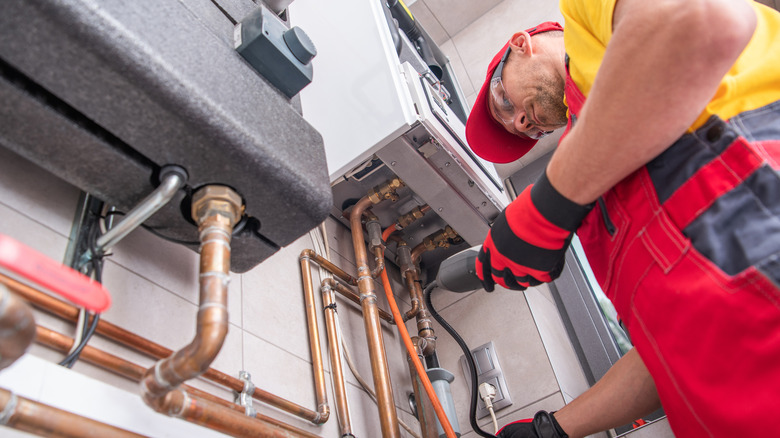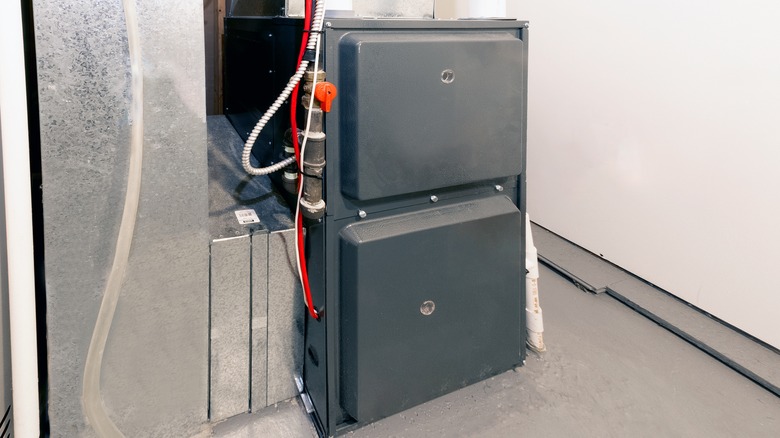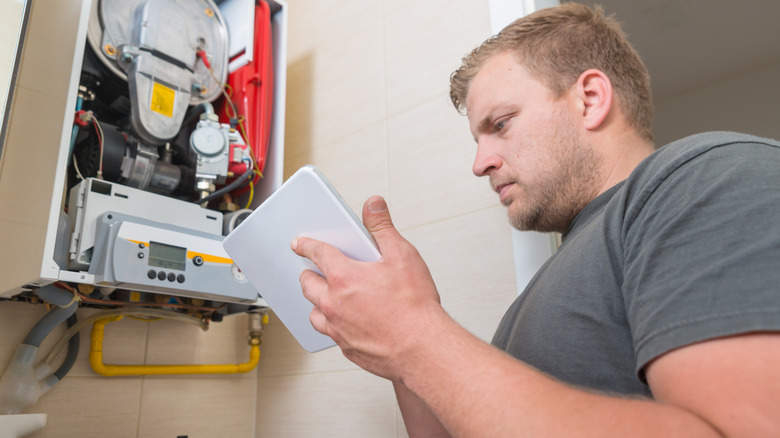What's Really Causing Your Furnace To Leak Water (And How To Fix It)
Discovering water around your furnace can be both puzzling and worrisome. If you're encountering this problem, it's crucial to understand there are several potential reasons behind it. The causes can range from simple maintenance needs to more complex mechanical faults. For instance, water leakage could be due to condensation, a clog in the condensate drain, or even issues related to the furnace's air filtration system. Each of these situations points to different aspects of your furnace's operation and requires a unique approach to troubleshoot.
To get a clearer picture, it's good to know a bit more about how furnaces operate. This knowledge not only helps in pinpointing the issue, but also guides you in maintaining your furnace, ensuring it continues to operate efficiently and safely. Furnaces are essentially the heart of many home heating systems, working tirelessly to keep your living spaces warm and comfortable. They function by drawing in cold air, heating it, and then distributing the warm air throughout your home.
If you've noticed water leaking, your furnace might need repairing. Keep in mind, though, that in high-efficiency furnaces, the process of heating air can lead to the production of condensation. This is a normal byproduct of their operation, as they extract heat from combustion gases more effectively than standard models. However, if the condensation line or drain is blocked, this moisture has nowhere to go and starts to leak out of the furnace.
Common reasons why your furnace is leaking
As mentioned, a common cause of water leakage in furnaces is water condensation, a typical occurrence in high-efficiency furnaces. Beyond this, another common water leakage issue arises from blocked air returns. These are crucial for maintaining furnace operation, but when they're blocked, the system works harder, potentially leading to condensation buildup. Blockages in specific pipes, such as the vent pipe, can be problematic. A vent pipe blockage can disrupt the furnace's operation, akin to a traffic jam disrupting the flow of vehicles. This disruption can lead to water accumulation and eventual leakage.
Apart from condensation issues and blocked air returns, there are several other factors that can cause your furnace to leak water. One common problem area is a dirty furnace filter. Think of the filter as the furnace's breathing apparatus. When it's full of dust and debris, it's like trying to breathe through a cloth — airflow is restricted. This restriction doesn't just affect the furnace's efficiency; it can lead to a variety of problems, including water leakage.
Leaks in the drain line itself are also a common problem. Over time, these lines can endure wear and tear, becoming damaged or loose. Finally, a plugged PVC drain line can also cause water leakage. This line is the unsung hero in the furnace's condensation process, quietly carrying away the moisture generated during heating. But when it gets clogged, it's like a blocked gutter during a rainstorm; the water has nowhere to go but back where it came from, leading to leaks.
The fix: How to stop your furnace from leaking water
When your furnace starts leaking water, quick and decisive action is key to preventing further damage. The first step is to turn it off to prevent any additional water from being produced or leaked. After shutting down the furnace, clean up any water. This helps to prevent water damage to your home, including the floors and walls around the furnace. Once you've managed the external spill, turn your attention to the inside of the furnace. If you're comfortable and it's safe to do so, remove the front panel of the furnace to access and dry the interior parts. Use towels to soak up the water.
Next, check the air filter. If you find that the filter is dirty, try to remove any debris. Finally, it's crucial to call a technician. Furnace systems are complex and require professional expertise to properly diagnose the issue. A qualified technician can inspect your furnace, identify the cause of the leak, and repair any damage. They can also guide you on any further steps you should take to prevent future leaks. In the meantime, please avoid using the furnace until the technician has completed their assessment and repair. This ensures the safety and proper functioning of your heating system.


